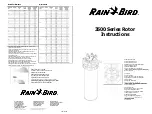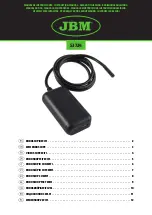
Protocol Analysis
R&S
®
Scope Rider RTH
227
User Manual 1326.1578.02 ─ 12
Table 9-10: Content of the protocol table for decoded LIN signal
Column
Description
#
Frame index
Frame Start
Time of frame start
ID [hex]
Identifier value, hexadecimal value
ID Label
Symbolic name of the identifier. Column is shown instead of "ID [hex]" if a
label list is used.
ID P [bin]
Value of the protected identifier, binary value
Values 8 bit [format]
Values of data bytes. The data format is selected in the "Bus" menu.
CHK [hex]
Checksum value, hexadecimal value
State
Overall state of the frame.
"Incomplete" indicates that the frame is not completely contained in the
acquisition. Change the time scale, or move the reference point to the left to
get a longer acquisition.
Remote control commands are described in
Chapter 15.11.6.3, "LIN Decode Results"
9.7
SENT (Option R&S
RTH-K10)
9.7.1
The SENT Protocol
This chapter provides an overview of the protocol characteristics, encoding scheme,
identifiers and trigger possibilities.
The SENT protocol transmits signal values point-to-point from a sensor to a controller
(electronic control unit ECU), unidirectional. In contrast to conventional measurements,
you can receive multiple data parameters via the SENT interface in a single transmis-
sion. Nevertheless, SENT is characterized by its simplicity and yet very high customiz-
ability to meet the individual requirements of the applications.
SENT operates via a three wire connection, a signal line, a supply voltage line for the
sensor and a ground line. It transmits data digitally in variable timing units and evalu-
ates the time between two falling edges (single edges). The signal is amplitude modu-
lated with a constant amplitude voltage. Thus influences of interfering signals are not
critical.
SENT key features
Main characteristics of SENT are:
●
serial communication protocol
●
3 wires: SENT (signal line), 5V (voltage line), GND (ground line)
●
output only, from sensor to receiver
SENT (Option R&S
RTH-K10)
















































